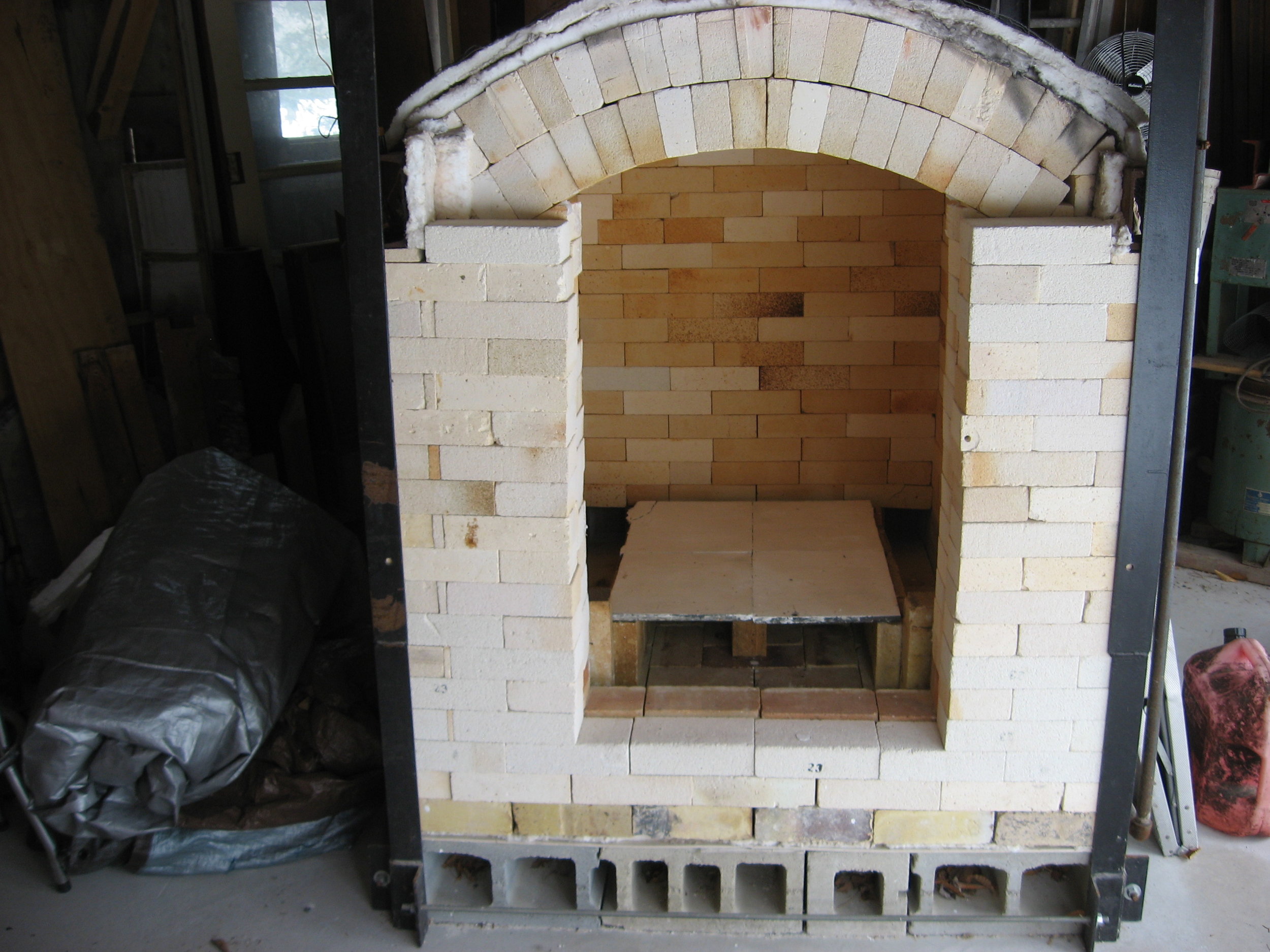A week after finishing the new kiln, I fired it for the first time. Cooling a kiln typically takes almost as long as the firing so with a wait time of least eight hours ahead before opening the door, I was able to do some reflecting on the firing. The kiln was full of recent work- bowls, cups, mugs, jars, teapots and plates- and included the special order for my two friends. The start of the kiln went well. Because it was newly constructed and likely holding some moisture given blowing snow that no doubt had found its way into the kiln room and the kiln, I started the two pilot burners slowly and had removed the top few rows of bricks in the door open to allow moisture to escape easily. The temperature outside was hovering around zero so that was likely close to the temperature in the kiln when I started. As the heat began to rise, I could see steam coming off the top of the sprung arch roof as well as from the opening in the door. Two hours later, with the door bricked up except for two bricks in the top row, I turned on one of the two main burners and watched my pyrometer jump from 80 to about 350 (degrees Fahrenheit) in a few minutes. I had adjusted the forced air burner as low as possible and still the flame reached far into the kiln. I held my breath and listened for the familiar thud of pots cracking or worse, blowing up. With no sounds of disaster, I stood back and watched as the temperature gauge climbed, degree by degree, up through 400 and then 500 degrees. It was obvious from the start there was a difference in temperature from the top to the bottom of the kiln. I marked down the temperature changes every 30 minutes and waited for the first sign of the red glow inside the kiln that starts to appear around 1,000 degrees. When it did, it was very obvious that the bottom of the kiln was showing more red than the top.
Trying to even out a firing is one of the biggest challenges firing a gas kiln, especially for the first time. I started thinking about how far apart the top and bottom of the kiln would be by the time the firing concluded. The pyrometer is a very useful tool at the beginning, but once the kiln gets up to about 1,000, it’s time to start keeping an eye on the cones that are used to more accurately gauge the temperature of the kiln. The cones are made to melt at very specific temperatures that are linked to melting temperature of glazes used. When the cones reach their melting temperature, they bend over and that provides very accurate indication of what’s happening inside the kiln. The higher the cone number, the higher the melting temperature with cones numbered 1-14 (approximately 2,000-2,500 degrees). For melting temperatures that are lower, the cone numbering system goes from 022-01 (approximately 1,000-1,900 degrees). If the cone number starts with a zero, the higher the number the lower the melting point. Confused yet? Typically, a bisque firing is done at cone 08-04 and the glazes I use melt at cone 10. I set up two sets of cones inside the kiln, one each in view of the top and bottom peepholes in the door. My full attention would be on those two sets of cones as the firing proceeded.





